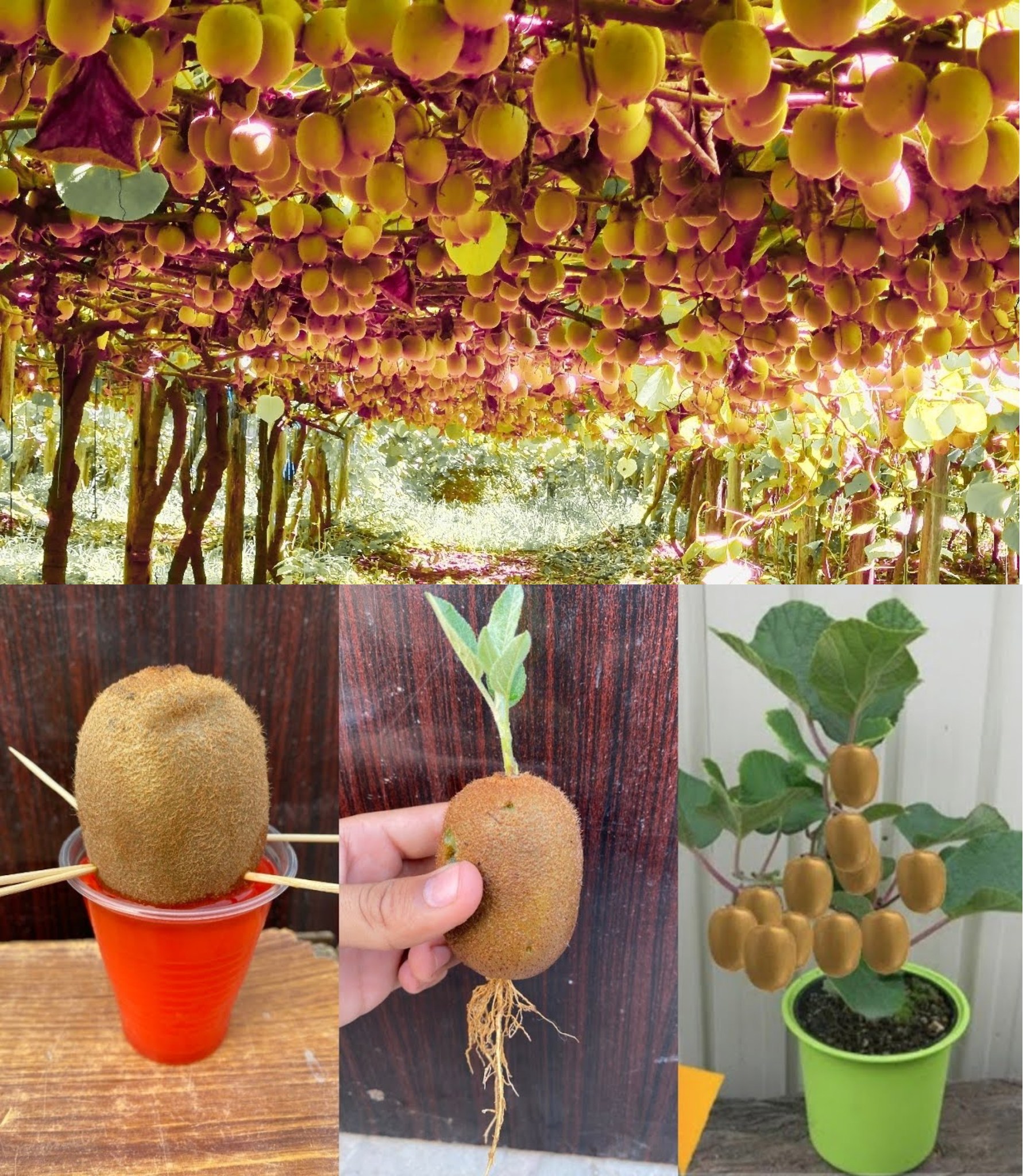
Growing Kiwis: Cultivation Tips for a Bountiful Harvest
The kiwi, scientifically known as Actinidia chinensis, is a plant originating from the Orient and widely cultivated in Italy, especially in central-northern regions. As a dioecious plant, with separate male and female flowers on different specimens, successful cultivation requires having at least one male plant alongside female ones. Being a climber, it thrives with sturdy support structures, making locations near walls or pergolas ideal. Kiwis favor semi-shaded areas protected from strong winds. Let’s explore the steps to grow and care for kiwis, ensuring a rich and flourishing harvest.
How to Grow Kiwis: From Planting to Harvesting
Kiwis flourish in temperate climates, favoring a sheltered position away from strong winds. A partially shaded environment is considered optimal, and the plant thrives in areas with ample rainfall, being averse to drought.
Optimal planting time is in spring, avoiding frost periods. Kiwis require a deep, permeable, well-drained soil enriched with organic material. The ideal pH level is between 6 and 7, with a preference for chlorine-free soil.
During spring, transplant kiwi plants, leaving a minimum of 2 meters between each. Apply mature manure as fertilizer, burying it in the surface layer of the soil. Adequate watering, especially in the morning and evening during summer, is crucial, particularly in regions with low rainfall or when planted near walls. Large plantations may benefit from a misting irrigation system during the hottest parts of the day.
Encourage optimal growth by allowing the main stem to grow vertically and lateral shoots on horizontal wires. Trim the upper part of the stem, leaving at least a couple of buds for horizontal growth. In summer, prune horizontal branches and lateral shoots to enhance fruit production. Over the years, trim overgrown branches in winter for ideal plant conditions.
Collection and Conservation:
Kiwis ripen in autumn, making November the harvest season. A gentle twist is sufficient to detach ripe fruit. In frost-free regions, harvesting can extend between December and February, resulting in sweeter, riper fruit. Stored in a cool, dry place in a single layer, harvested kiwis remain viable until April.
Diseases and Parasites:
Typically resistant to pests, kiwi plants may encounter aphids or scale insects, treatable with natural remedies. Bacteriosis poses a potential disease, characterized by light brown droplets turning reddish, leading to rotting shoots. Prune affected branches with sterilized shears to prevent and manage bacterial infections.
Growing Kiwis in Pots:
Kiwi plants are adaptable to container cultivation on balconies or terraces. Maintain the same care as ground cultivation, ensuring fertile soil with organic fertilizer. When potted, introduce a male plant alongside at least six female plants to facilitate fruit-bearing.
Successfully cultivating kiwis requires attention to planting conditions, proper care, and effective disease prevention measures. With dedication, you can enjoy a thriving kiwi harvest year after year.
Share Article: